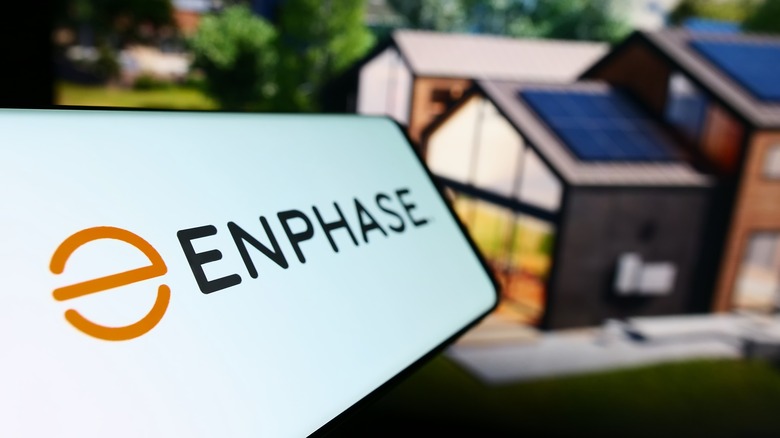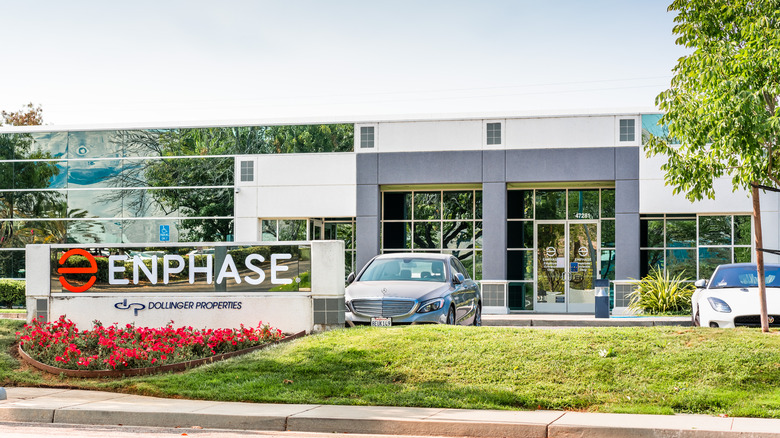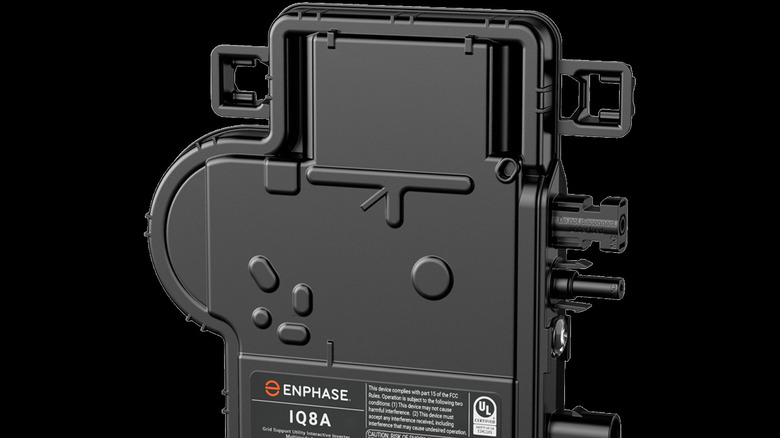What Are Enphase Microinverters For Solar, And How Much Do They Cost?
Enphase revolutionized the solar panel industry with its patented microinverters and the Enphase Energy System. With its products, customers can harness the sun's energy to power entire homes, charge electric vehicles, and even make a profit. Enphase helps lower utility bill costs and carbon footprints while giving users a smartphone app to view and control their power flow. But what are the company's microinverters, and how much do they cost?
When a solar panel is exposed to sunlight, it produces direct current (DC) electricity. This could be all you need from solar panels, especially if you primarily charge batteries, as they store DC energy. However, if you want to power your home, you'll need to convert the DC energy into alternating current (AC) energy. That's where the microinverter comes in.
Homes exclusively use AC for power. Enphase microinverters, like string solar panel inverters, convert DC energy to AC, allowing solar panels to produce electricity that can directly power your home. Any solar panel with "AC" in the name has some form of inverter, and Enphase is such a trusted source that many solar panels today feature its microinverters.
Where are Enphase microinverters made?
The California-based company, founded in 2006, partnered with Flextronics to manufacture its solar microinverters in-house. Like many companies, Enphase and Flex initially had manufacturing plants in China. That is until 2018, when Enphase announced a production shift to Mexico in the second quarter of 2019. Then, in 2023, Enphase established two production facilities within the United States, where it now ship all of its microinverters.
Although California is the best U.S. state for solar energy, Enphase houses the two new production facilities in Columbia, South Carolina, and Arlington, Texas. Naturally, the shift to an American-based production helps Enpahse better serve its U.S. customers. However, the company also emphasizes the importance of creating more jobs in the United States while also advancing the country's clean energy economy.
Enphase and Flex hosted a massive open house in South Carolina in July of 2023 to celebrate the opening of the facilities, inviting clean energy personnel, government officials, and even President Joe Biden. During a tour of the Arlington facility featured on The Solar Energy Channel by Paradise Energy on YouTube, Larry Beiler, VP of Design and Procurement at Paradise Energy Solutions, said, "I'm really impressed with all the inspections you guys [Enphase] do and the quality control all the way throughout the process. Definitely, quality [and] U.S. jobs is high on the priority list for Enphase." Enphase plans to open both facilities for tours for Enphase installers.
How much do Enphase microinverters cost?
Enphase microinverters are either preinstalled in solar panels or sold separately to attach to one during installation. Although they primarily sell to solar panel manufacturers, Enphase also sells its microinverters online, and with the shift to U.S.-based production, you can get them quickly and directly from the source.
Each Enphase microinverter features an IQ inverter with one of two connector types: Q-DCC or MC4. Both models convert DC power to AC energy just fine, but the microinverters with Q-DCC connectors require an extra adapter to connect to a solar panel. In simpler terms, Q-DCC is the older version, whereas Enphase introduced integrated MC4 connectors for faster and easier installations. However, they continue to sell microinverters with both connectors at no price difference. Enphase microinverters range from $79 for the oldest IQ7 model to $242 for the latest and greatest IQ8.
It's worth noting that Enphase does not make solar panels, but they do sell a few online that are manufactured by Qcells and feature built-in Enphase IQ7+ microinverters. The price of each panel directly correlates with its wattage, with the cost increasing with the more energy it produces. The IQ7+ Qcells 360 W Kit, the most affordable option, costs $451, and the most expensive option, the 9.49 kW kit, raises the price to $11,961 for a single AC solar module. Solar panels eventually pay themselves off, but these may take longer than average.


